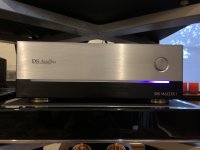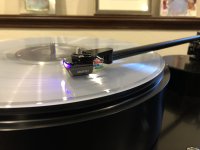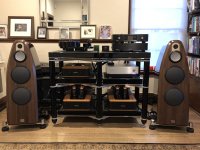- Thread Author
- #1
So today i had installed a new DS Audio Master1 cartridge and matching phono stage. It replaced the DS Audio DS002 cartridge and matching phono.
the changes are spectacular and quite in awe of how a simple piece of plastic can sound so so good. I thought it sounded good before but this has taken it to whole new level.
obviously it needs to break in but already the soundstage is so much more spacious and extends well beyond speakers both laterally and in depth. Also the bass seems to have gone up a notch - sounding deeper, sharper and with more texture. But its the spatial cues that have me excited - its sounds way more 3 dimensional.
here are some pics:



the changes are spectacular and quite in awe of how a simple piece of plastic can sound so so good. I thought it sounded good before but this has taken it to whole new level.
obviously it needs to break in but already the soundstage is so much more spacious and extends well beyond speakers both laterally and in depth. Also the bass seems to have gone up a notch - sounding deeper, sharper and with more texture. But its the spatial cues that have me excited - its sounds way more 3 dimensional.
here are some pics:



